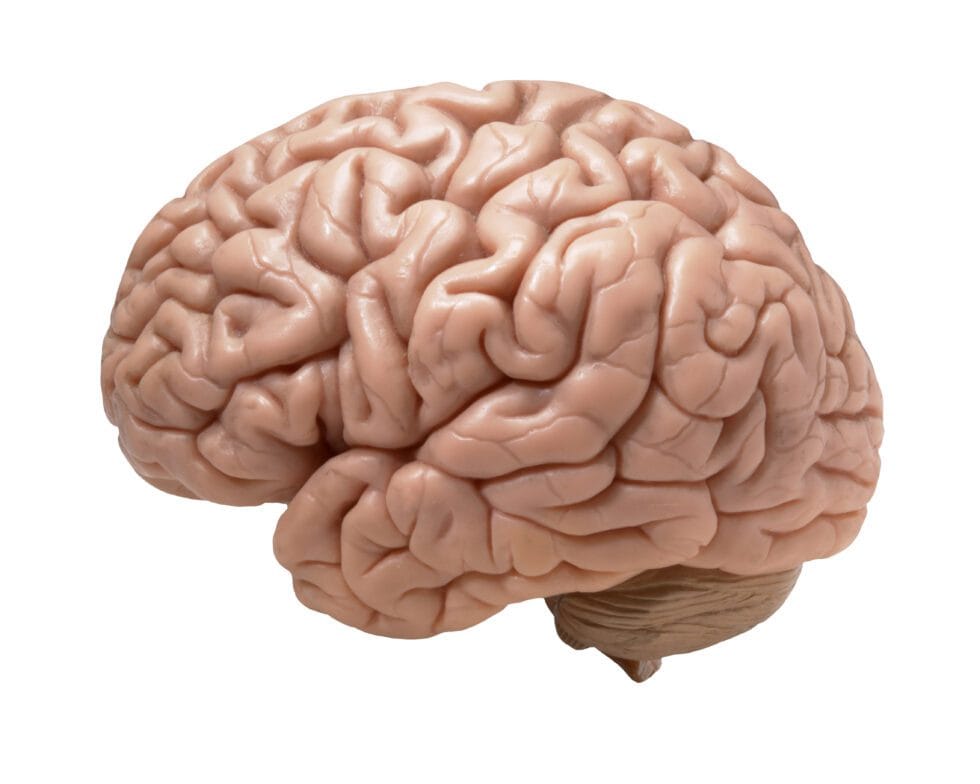There is a galaxy in your head.
A thundering, whispering cosmos—silent to the outside world, yet louder than anything else you will ever know. It dreams, remembers, loves, suffers, calculates, creates. It makes music and war, raises civilizations and questions its own mortality. It is the human brain, and it is perhaps the most astonishing creation of the universe—a universe that, paradoxically, may never be fully understood by anything other than the very brain trying to understand it.
We take it for granted, tucked inside the protective armor of the skull, like some secret treasure hidden in a dark cave. Yet this three-pound mass of tissue holds the code to what makes you you. Every thought you’ve had, every word you’ve spoken, every time your heart raced, your skin tingled, your tears fell—it all began somewhere in the mysterious jungle of cells, signals, chemicals, and connections that make up the brain.
But what, precisely, is the human brain made of? This question is deceptively simple. To answer it fully requires a journey that spans atoms and emotions, molecules and memories. The brain is both a structure and a story—formed by evolution and transformed by experience. It is made of matter, yes—but also of magic.
Let us step inside this wondrous organ, and look not only at what it is made of, but what those materials allow it to do.
The Hidden Architecture of the Mind
At first glance, the brain appears disappointingly mundane. Remove it from the skull and it resembles a large, wrinkled walnut—grayish, soft, and fatty. And in a way, that’s what it is: a gelatinous organ, composed mostly of water and fat, weighing roughly 1.3 to 1.5 kilograms. It floats in cerebrospinal fluid, which protects it from impact and nourishes it with vital nutrients. But beneath its unremarkable appearance lies an internal architecture more complex than any computer, more exquisite than any cathedral.
The surface of the brain is folded into grooves and ridges—gyri and sulci—that vastly increase its surface area without expanding its volume. This wrinkling is a hallmark of evolution’s ingenuity, allowing more neurons to be packed into the skull. The outer layer is called the cerebral cortex, and it is here that some of the most advanced functions of the brain—conscious thought, planning, decision-making, and language—are carried out.
The brain is divided into two hemispheres, left and right, connected by a thick bundle of nerve fibers called the corpus callosum. Though commonly thought to represent logic and creativity respectively, both hemispheres work together in ways far more nuanced than any simple duality can explain.
Within and beneath the cortex are structures with ancient evolutionary roots. The limbic system, for instance, plays a key role in emotion and memory, while the brainstem controls the most basic functions of life—heartbeat, breathing, and arousal. But across all regions, the brain is made of two primary types of cells: neurons and glial cells.
Neurons: The Sparks of Consciousness
If the brain were a city, neurons would be its citizens—electrically excitable cells that communicate across vast networks, carrying signals at speeds of up to 250 miles per hour. There are approximately 86 billion neurons in the adult human brain—each one a marvel of biological engineering.
A typical neuron has three main parts: the cell body (or soma), which contains the nucleus and most of the organelles; dendrites, which branch out to receive signals from other neurons; and a long, thin axon, which transmits signals to other neurons, muscles, or glands. The axon may be insulated by a fatty substance called myelin, which speeds up electrical transmission.
But neurons do not touch one another. Instead, they communicate across tiny gaps called synapses—about 100 trillion of them in your brain. When an electrical impulse reaches the end of an axon, it triggers the release of neurotransmitters—chemical messengers that float across the synaptic gap and bind to receptors on the receiving neuron’s dendrites.
These neurotransmitters are many and varied—dopamine rewards you for pleasure and motivates behavior; serotonin modulates mood and appetite; acetylcholine governs muscle movement and attention; GABA inhibits overactivity, promoting calm; glutamate fuels learning and memory.
The complexity here is staggering. One neuron can form thousands of connections. Entire circuits are created, modified, or destroyed based on your experience, environment, and genetics. This vast network allows you to perceive the world, understand language, move your fingers, fall in love, remember a scent, or invent poetry.
Glial Cells: The Silent Support System
For many years, glial cells were dismissed as mere scaffolding. Their name comes from the Greek word for “glue,” and scientists once believed their only purpose was to hold neurons in place. But research in the last few decades has dramatically altered that perception.
There are roughly equal numbers of glial cells and neurons in the human brain. These cells come in different types: astrocytes, oligodendrocytes, microglia, and ependymal cells, each with a unique role. Astrocytes regulate the chemical environment, maintain the blood-brain barrier, and influence synaptic activity. Oligodendrocytes produce myelin in the central nervous system, while Schwann cells do the same in the peripheral nervous system. Microglia act as the brain’s immune system, seeking out and destroying pathogens and damaged cells.
Glial cells modulate inflammation, promote healing, and even participate in neural signaling. They are not passive. They are intelligent actors in the theater of thought—quieter than neurons, but no less essential.
The Matter of Gray and White
The brain is often described in terms of gray matter and white matter, a distinction based on coloration visible in preserved tissue. Gray matter contains most of the brain’s neuronal cell bodies, dendrites, and synapses. It is found largely in the cerebral cortex and is involved in muscle control, sensory perception, memory, emotions, and decision-making.
White matter consists mostly of myelinated axons, which appear white due to the high fat content of myelin. These axons connect different regions of gray matter, allowing for fast, long-distance communication. Without white matter, the processing power of gray matter would be isolated—trapped islands of thought.
Together, these components form the highways and hubs of the brain. They enable cognition and consciousness. They allow you to recall a childhood memory or dream of a future that hasn’t yet happened.
The Brain’s Chemical Symphony
If neurons are the musicians and glial cells the stage crew, neurochemicals are the instruments and notes of the brain’s performance. The human brain contains a vast array of neurotransmitters, hormones, and enzymes that shape everything from emotion to energy levels to sleep cycles.
We are chemically dynamic beings. Stress floods the brain with cortisol and adrenaline, sharpening attention and preparing for action. Endorphins dull pain and elevate mood. Oxytocin, often called the “love hormone,” fosters bonding and trust.
The brain is exquisitely sensitive to its chemical environment. Even subtle shifts in dopamine or serotonin levels can affect mood, motivation, and well-being. Mental illnesses like depression, schizophrenia, and anxiety disorders are often associated with disruptions in these neurochemical systems, revealing how deeply our biology intertwines with our mental state.
Blood, Barriers, and Energy
Though it makes up only 2% of body weight, the brain consumes about 20% of the body’s energy, mostly in the form of glucose. This energy demand is relentless. If blood flow to the brain is interrupted for more than a few minutes, consciousness fades. If cut off longer, permanent damage or death occurs.
Blood reaches the brain through a rich vascular network, but the organ is selectively protected by the blood-brain barrier—a semi-permeable membrane that allows essential nutrients to enter while blocking toxins and pathogens. This barrier is essential, but it also makes treating brain diseases extremely difficult, as many drugs cannot pass through.
The brain also regulates temperature, pH levels, and waste removal through complex interactions with the cerebrospinal fluid and lymphatic system. Every moment of your life, even when you sleep, your brain is tirelessly maintaining its own internal environment.
Plasticity and Change: The Brain That Rewires Itself
Perhaps the most wondrous thing about the human brain is not just what it is made of—but how those materials change over time. The brain is not fixed. It is plastic, meaning it has the ability to rewire itself in response to experience.
This phenomenon, called neuroplasticity, allows you to learn new skills, recover from injury, and adapt to new environments. New neurons can be born in certain regions—a process called neurogenesis—and synaptic connections can be strengthened or weakened based on how often they are used.
When you practice the piano, learn a language, or fall in love, you are physically changing your brain. It is not just a static organ made of static parts. It is a living, shifting system sculpted by life itself.
Memory, Identity, and the Mystery of Self
How can a soup of fat, water, and protein give rise to memory?
How can patterns of electrical activity create a sense of identity, a continuous thread of “I” that persists from childhood to old age?
These questions remain some of the deepest in science. Memory is thought to involve changes in synaptic strength, the formation of new connections, and reactivation of specific networks of neurons. Long-term memories are stored across multiple regions, rather than in a single “memory bank.”
But the full picture is elusive. The self, that intangible sense of being, emerges from the coordinated dance of billions of neurons. You are not separate from your brain—you are your brain, in a very real sense. And yet, the brain also feels like a lens through which something deeper peers out.
Evolution’s Masterpiece
The brain did not arrive fully formed. It is the product of millions of years of evolution, layer built upon layer. The reptilian brainstem is the oldest part, regulating basic survival functions. Above it, the limbic system evolved in mammals to manage emotion and social behavior. And crowning it all is the neocortex, especially enlarged in humans, giving rise to abstract thought, imagination, and reason.
This evolutionary layering explains why our minds are so often conflicted. Primitive impulses jostle with moral ideals. Logic contends with emotion. The brain is not a unified whole, but a coalition of systems—sometimes harmonious, sometimes at war.
This internal tension is the seed of art, tragedy, invention, and human complexity. The same brain that makes war can also write poetry about peace.
When the Brain Breaks
The brain’s incredible complexity makes it vulnerable to disease. Alzheimer’s, Parkinson’s, epilepsy, stroke, multiple sclerosis, depression, and traumatic injury all strike at different parts of the brain. Some conditions destroy neurons; others disrupt chemical signaling or alter structural connectivity.
Yet understanding what the brain is made of—and how it works—has enabled remarkable advances. Brain-computer interfaces now allow paralyzed patients to control prosthetics with thought. Deep brain stimulation can alleviate the symptoms of Parkinson’s. Imaging technologies let us watch the brain in action, detecting dysfunctions invisible just a generation ago.
But even our most advanced tools still only scratch the surface of this mysterious organ.
The Mind Inside the Matter
What the brain is made of—cells, chemicals, currents—is not all it is. It is also made of dreams and fears, hopes and regrets, memories and plans. No scan can capture your love for your child or the agony of loss. No microscope can show the color of your imagination or the shape of your laughter.
And yet, these experiences are real. They emerge from physical structures, but transcend them.
That is the paradox of the brain: it is both matter and meaning.
Conclusion: A Mirror to the Universe
The brain is not just a collection of cells. It is a cathedral made of neurons, glia, blood, and bone—lit from within by sparks of thought. It is the seat of knowledge, the wellspring of creativity, the crucible of identity. It is made of the same atoms as stars, arranged in such a way that the universe can contemplate itself.
What is the human brain made of?
It is made of biology and chemistry, yes. But it is also made of questions—and it may be the only thing in the universe capable of asking them.






